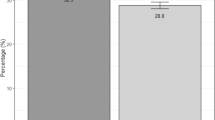Abstract
Newer immigrants to the United States, whether undocumented, recent legal immigrants, those here on temporary visas, or migrant workers, are far less likely than native-born residents of the United States to have reliable health insurance. This entire group of patients is then at risk for delayed or absent medical care. Our study focused on what effects a free, quality prenatal care program had upon prenatal care and delivery outcomes for an underinsured population, primarily of immigrant women. With a recent change in Iowa’s eligibility criteria for Presumptive Medicaid (referred to as Temporary Medicaid), pregnant patients who have less than a 5-year legal permanent residency status, undocumented status, or out-of-country resident status can receive up to two months of covered antepartum care, whereas previously eligible for coverage for the entirety of their pregnancy. With that reality, several faculty members from the Department of Family Medicine at the University of Iowa started a weekly prenatal care clinic in collaboration with the longstanding Iowa City Free Medical Clinic. This study sought to compare outcomes for patients who utilized only Temporary Medicaid to those who also had access to this prenatal free medical clinic (FMC), as well as to compare outcomes for the FMC program to typical Medicaid patients who had access to full prenatal care. Compared to the Temporary Medicaid-only group, our FMC patients had a significantly greater number of prenatal visits. This increased access of continuity prenatal care led to increased screening for gestational diabetes, receipt of recommended vaccinations, and screening for group B streptococcus. Our effort has shown that expanding prenatal healthcare coverage to this underinsured population can greatly increase the quality of maternity care and reduce the potential for high-risk pregnancies, bettering the care for these pregnant women and their newborns.
Similar content being viewed by others
References
Council, A. I. (2020). Retrieved from https://www.americanimmigrationcouncil.org/sites/default/files/research/immigrants_in_iowa.pdf
Ku, L. (2006). Why immigrants lack adequate access to health care and health insurance. Migration Information Source. https://www.migrationpolicy.org/article/why-immigrants-lack-adequate-access-health-care-and-health-insurance/#:~:text=Data%20on%20Immigrants%27%20Access%20to%20Health%20Insurance%20U.S.,uninsured%20%2844%20percent%29%20as%20native-born%20citizens%20%2813%20percent%29
WHO. (2016). Pregnant women must be able to access the right care at the right time, says WHO. Retrieved from https://www.who.int/news/item/07-11-2016-pregnant-women-must-be-able-to-access-the-right-care-at-the-right-time-says-who
Dowswell, T., et al. (2015). Alternative versus standard packages of antenatal care for low-risk pregnancy. Cochrane Database of Systematic Reviews, 2015(7), CD000934.
Robbins, C., & Martocci, S. (2020). Timing of prenatal care initiation in the health resources and services administration health center program in 2017. Annals of Internal Medicine, 173(11 Suppl), S29-s36.
Skoff, T. H., et al. (2017). Impact of the US maternal tetanus, diphtheria, and acellular pertussis vaccination program on preventing pertussis in infants <2 months of age: A case-control evaluation. Clinical Infectious Diseases, 65(12), 1977–1983.
Havers, F. P., et al. (2020). Use of tetanus toxoid, reduced diphtheria toxoid, and acellular pertussis vaccines: Updated recommendations of the advisory committee on immunization practices—United States, 2019. MMWR: Morbidity and Mortality Weekly Report, 69(3), 77–83.
Razzaghi, H., Kahn, K. E., Black, C. L., Lindley, M. C., Jatlaoui, T. C., Fiebelkorn, A. P., Havers, F. P., D’Angelo, D. V., Cheung, A., Ruther, N. A., & Williams, W. W. (2020). Influenza and Tdap vaccination coverage among pregnant women: United States, April 2020. CDC Weekly, 69(39), 1391–1397.
Lu, M. C., et al. (2000). Elimination of public funding of prenatal care for undocumented immigrants in California: A cost/benefit analysis. American Journal of Obstetrics and Gynecology, 182(1 Pt 1), 233–239.
Reed, M. M., et al. (2005). Birth outcomes in Colorado’s undocumented immigrant population. BMC Public Health, 5, 100.
Acknowledgements
We would like to express our great appreciation to the Iowa City Free Medical Clinic staff, volunteers, and donors, the leadership from the department of Family Medicine and the Family Medicine Residency program for their valuable support.
Author information
Authors and Affiliations
Corresponding author
Additional information
Publisher's Note
Springer Nature remains neutral with regard to jurisdictional claims in published maps and institutional affiliations.
Rights and permissions
Springer Nature or its licensor holds exclusive rights to this article under a publishing agreement with the author(s) or other rightsholder(s); author self-archiving of the accepted manuscript version of this article is solely governed by the terms of such publishing agreement and applicable law.
About this article
Cite this article
Welder, E., Powers, J., Walter, A.C. et al. Providing Prenatal Care for Patients with Limited Medical Insurance Coverage. J Community Health 47, 974–980 (2022). https://doi.org/10.1007/s10900-022-01133-0
Accepted:
Published:
Issue Date:
DOI: https://doi.org/10.1007/s10900-022-01133-0




